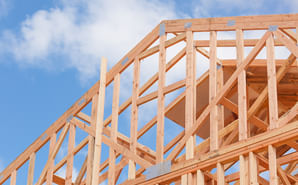Safety when renovating
Make sure you are not working with hazardous material and that you put safety first.
Your home-improvement may be exempt from a formal approval process
The NSW Exempt and Complying Development Code is a planning policy which simplifies the process for approvals of alterations, additions and new developments. If you are planning on renovating or extending your home, or improving your property in any way it is possible the work may be exempt from development approval, or be a Complying Development, which means it can be fast-tracked.
Click here (https://www.planning.nsw.gov.au/Policy-and-Legislation/Exempt-and-complying-development-policy) to see exactly what work comes under the category of Exempt and Complying Development
Safety when renovating
Identification of asbestos
Asbestos cement (or AC Sheet) is regularly encountered during demolition of houses built prior to 1987. This is also known as bonded asbestos. Asbestos cement sheeting and normal fibro can only be identified by trained experts. If you are concerned that you may have asbestos, contact SafeWork on 13 10 50 or the NSW EPA Environment line on 131 555 to report illegally dumped asbestos.
Fibrous asbestos (friable asbestos)
Insulation material in older buildings may also consist of fibrous asbestos material, (friable asbestos). Friable asbestos material means any material that contains asbestos and is in the form of a powder or can be crumbled, pulverised, or reduced by hand pressure when dry.
- For more information about renovating and asbestos go to www.asbestosawareness.com.au
- For more information about the safe disposal of asbestos go to Bega Valley Shire Council’s Hazardous Waste Asbestos page
Lead paint
Homes built before the 1970s may still have surfaces coated with lead-based paint. Particles of lead-based paint are harmful and pregnant women, children and pets should not be present in areas where lead-based paint is being removed or where clean-up is occurring. For safety guidelines on working with lead-based paint please go to the Office of Environment and Heritage.






